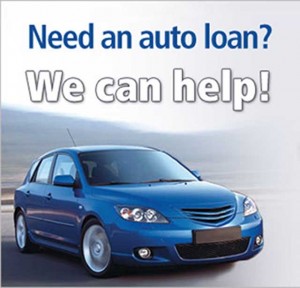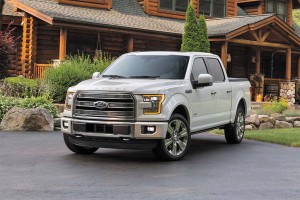The Federal Reserve raised interest rates for the first time in a decade on Wednesday and, while the move has been widely expected for some time, there’s plenty of uncertainty about the potential impact on various sectors of the economy – notably including the auto industry.
Car sales should reach 17.4 million when the final numbers for 2015 are tallied in a few weeks, setting an all-time record. But whether the market will maintain that pace in the New Year is far from certain. Most analysts are anticipating there’s still some momentum left, but not everyone is quite so certain.
Wednesday’s quarter-percentage-point increase “shouldn’t deter people with average or above-average credit scores,” forecast Joe Phillippi, senior auto analyst with AutoTrends Consulting. “But it could impact people in the sub-prime category,” he cautioned.
(Cheap gas expected to translate into record holiday travel. Click Here for the story.)
Auto sales bottomed out during the depths of the Great Recession, dipping to less than 10 million, a 40% decline from the industry’s previous peak set at the start of the new millennium. Low interest rates were clearly a factor behind the torrid upturn automakers have experienced over the last few years, especially when so-called pent-up demand is also factored in. Millions of American motorists have been making trade-ins on aging vehicles they continued to drive during the downturn.
Industry observers debate just how much pent-up demand remains, but they point to the fact that the average vehicle on U.S. roads is now older than ever, a bit more than 11 years, according to research by Experian Automotive.
One factor that could help determine what happens in the auto industry is how the Fed’s rate hike will impact other industries, housing in particular. Strong demand for new housing has, in turn, spurred strong sales of pickups, vans and other work trucks. So, a housing slowdown could reduce demand for some of the auto industry’s most profitable products, vehicles like the full-size Ford F-150 pickup.
Over the years, automakers have taken a number of steps to help offset high interest rates. Even in more recent times, when consumer loans were running at or near record-low levels, manufacturers have tried to make financing more palatable. Traditional cash-back deals have, in many cases, been supplanted by subsidized loans, translating into lower annual percentage rates, or APRs.
“We don’t expect auto loan rates to rise in the near term especially with automakers continuing to offer successful low-APR promotions,” said Jessica Caldwell, director of industry analysis for Edmunds. “We’ve seen particularly in the last several months that more and more shoppers have been drawn in by these low interest rates, so as long as they continue to respond to these deals, automakers will do everything in their power to continue offering them.”
For the first 11 months of this year, according to Edmunds data, nearly 10% of U.S. new car buyers were able to line up loans at zero interest, up from 8.7% in 2014.
(New vehicle registrations guarantee 2015 will end with sales record. Click Here for the latest.)
Tom Webb, the former economic analyst with the National Auto Dealers Association, and now chief economist for Manheim, stressed the real issue isn’t a 0.25-point interest rate hike but one of finance availability.
“There is nothing more important to the vitality of the new and used vehicle markets than the availability of retail financing,” said Webb, who crunches numbers for Manheim’s automotive auctions, as well as its online auto services, such as AutoTrader.com. “Will that change now that the Federal Reserve has embarked on what will likely be a series of rate hikes? Absolutely not.”
As far as Webb is concerned, the things to watch in 2016 are “macro-economic reverberations,” things like volatility in emerging markets, or big swings in exchange rates, that “derail” the U.S. economic upturn.
The Fed’s rate hike, if it does have an impact on car buyers, could be felt more directly by those with weaker credit, analysts warn, those who are likely to pay more for financing to begin with and who are less likely to qualify for subsidized interest programs.
Some forecasts have envisioned 2016 sales might slip by 100,000 vehicles or so, as a result.
The more likely scenario, according to analyst Phillippi, is that they will continue to buy new cars, trucks and crossover, “but they may take the option of buying less vehicle.” That could mean opting for smaller or less luxurious products, and leaving off some options.
That’s not as much of a threat to the industry as might be a wholesale downturn in sales, but it would not be welcome by the industry. Average Transaction Prices, or ATPs, the price buyers actually pay as they drive off the lot, have been running at or near record levels this year. So, if motorists decide to downgrade their purchases to keep things within a tighter budget, it would still have an impact on the industry’s collective bottom line.
(Which auto brands have the highest resale value? Click Here to find out.)


